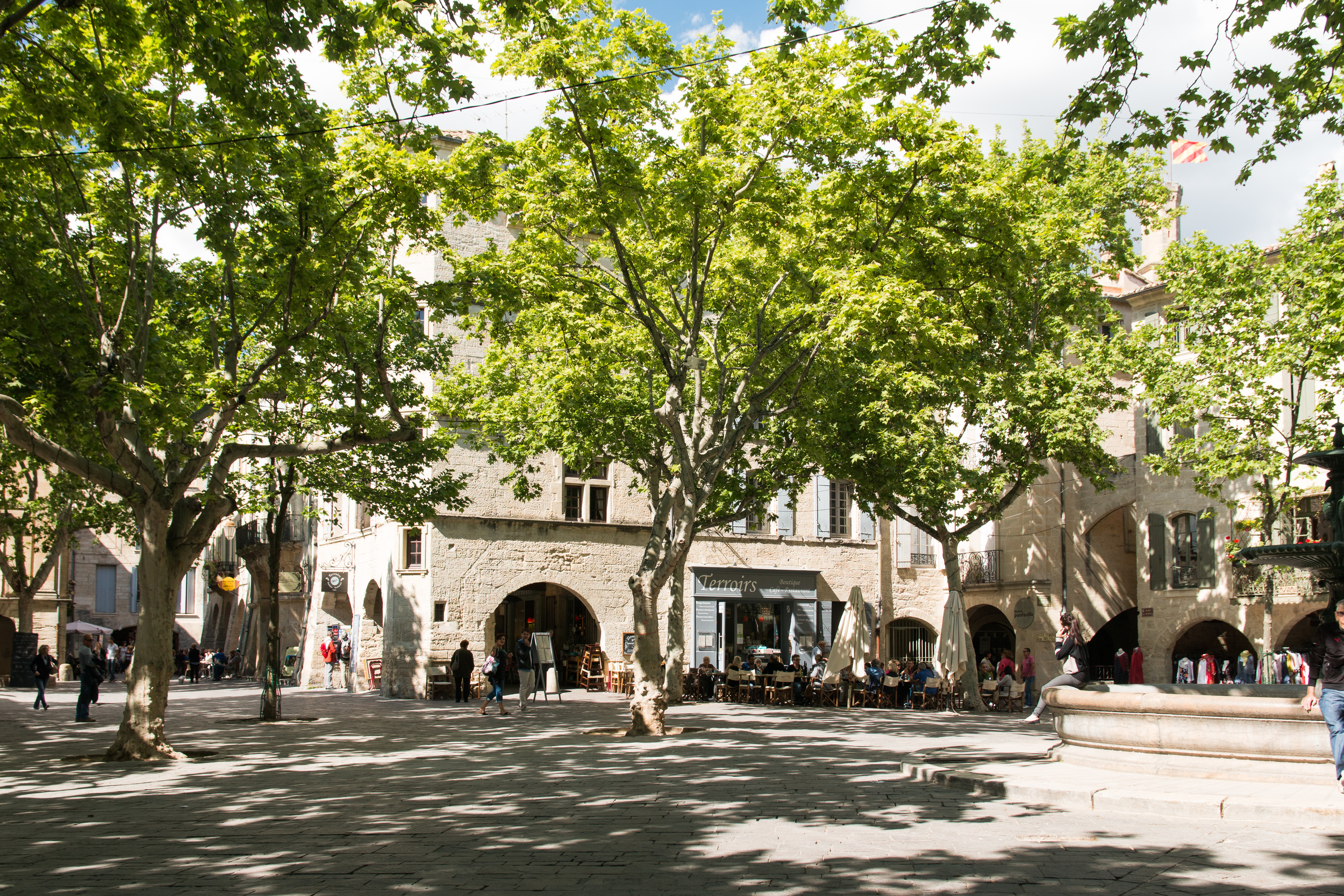Happy Friday! Today we’re taking a quick look at Carcassonne, one of the most iconic fortified cities in the world.
It has been on my “must-see” list for awhile and I think we’re finally going to have the opportunity to drive there on the honeymoon. It’s located in the southwestern part of the Languedoc-Roussillon, about 2 to 2.5 hours from where we are staying in Uzès. I figured it was a good time to do some research and post a Friday 5 on it. That way I can come back, follow-up on my research, and give you my “been there, done that” two cents.
La Cité and Chateau Comtal
The double-walled medieval town is the eye-catching main attraction for most travellers who visit Carcassonne. Thanks to its strategic hilltop location, it has a long history, as far back as the Celts, as a fortified settlement.
It was the Cathars, an ascetic Christian sect, who drew attention to Carcassonne in the 13th century. They strongly opposed what they saw as a corrupt, power-hungry Catholic Church. As Catharism began spreading across pockets of Europe, including southern France, the threat became too great for Pope Innocent II.
This was the era of Papal power and brutal crusades. So, what did the Pope do? He had King Augustus of France send a crusade in to lay siege to the Cathars of the Languedoc. In 1209, Carcassonne fell to the Catholics, led by Simon de Montfort. The Cathars were expelled and ruthless inquisitions followed to rid the city of any remaining heretics.
More fortifications were added over time to protect the town from any other attacks. So when Edward, the Black Prince, and his army came knocking in 1355, during the Hundred Years’ War, Carcassonne was nearly impenetrable.
Like many cities and towns in history, Carcassonne peaked and then fell into disrepair. Napoleon took it off of his official list of fortifications and the town languished further. It was almost destroyed completely until Eugène Viollet-le-Duc, an architect, came along in the mid-nineteenth century with a plan. In 1846, he began a massive restoration project that brought La Cité to life. Today it is a UNESCO world heritage site and an incredibly popular tourist destination. (video link for email subscribers)
Besides walking the ramparts, visiting the great Narbonne and Aude gates, and wandering the cobblestone streets shopping for souvenirs, the Château Comtal is another major attraction. Tickets are €8.50 per person (as of today's writing) and visitors can get an audio guide for another €4.50.
I highly recommend taking a look at Creme-de-Languedoc’s fantastic Carcassonne guide for an in-depth look at the history and suggestions on how to plan your day.
Everything I’ve read or watched about Carcassonne suggests that visitors go in the morning, just after it opens, or later in the afternoon, just before closing. I’ve also read plenty of warnings about how touristy it feels, almost like a theme park, but that the hordes of people and the shops full of cheap trinkets don’t spoil the amazing sites.
Basilica of Saint Nazaire and Saint Celse
A beautiful gothic church within the walls of La Cité. In 1096, Pope Urban II visited Carcassonne, blessed the church’s foundation, and ordered the cathedral to be built. In 1801 it was downgraded to a basilica and St. Michaels, another church outside of the walled city, was upgraded.
Canal du Midi
The canal, built between 1667 and 1694, was created by Pierre-Paul Riquet to link the Mediterranean with the Atlantic. At 360 km long, Carcassonne is just one of many towns it meanders by on its journey. The best ways to enjoy the canal are by boat or walking. There quite a few options for boat rides, from half day trips to multi-day trips. Here is an example of what one company offers. Cycling is another option, but there seem to be a few caveats about the terrain and safety.
Based on what I’ve read, the most picturesque route is eastward from Carcassonne toward Narbonne. To get away from some of the crowds, Creme de Languedoc recommends taking the eastward trip hoping off to explore the next town over, Trèbes.
Bastide Saint Louis
Carcassonne’s lower town, Bastide Saint Louis, is about a 15-20 minute walk from La Cité over the River Aude via the pedestrian bridge, Pont Vieux (which can be seen in the first photo above). A nice bonus to the walk is the stunning view of the walled city on the hill from the bridge. While Bastide Saint Louis is not as impressive as La Citê, it has a number of shops and restaurants to explore. Its grid system makes it fairly easy to navigate and the pretty main square, Place Carnot, holds a big Saturday morning market. It might make a good getaway from the crowds.
Bonus: Labyrinth by Kate Mosse
One of my favourite things to do while traveling is to read a novel set in the area I’m visiting. Kate Mosse’s Labyrinth is a perfect choice for visiting Carcassonne.
Labyrinth is historical thriller that revolves around the Cathars and the mystery of the true Grail (yes, Dan Brown’s Da Vinci Code comparisons are everywhere). Alice Tanner is an archeologist on a dig outside of Carcassonne in 2005. She discovers a tomb with two chilling skeletons and the pattern of a labyrinth scrawled on the walls. What she will come to find out is that in 1209, on the eve of the Crusades, a young girl named Alaïs was entrusted to protect a book and a ring inscribed with that labyrinth. Together these two items hold the key to the true Grail, a mystery that that will change both women’s lives.
I’ve actually had this book sitting on my bookshelf for years and just haven’t found the right time to read it. It’s going in the honeymoon carryon!
That’s all for this week! Our plans right now are to celebrate Cinco de Mayo a little early with my dad’s homemade tamales (so good!) and do wedding things. The to-do list seems to be growing despite doing wedding things everyday. Funny how that works! Silly weddings!
By the way, if you like board games, Carcassonne has inspired its very own. I couldn’t go this whole post without at least mentioning that it existed!
I hope you have a great weekend and enjoy some beautiful weather.














![Le Duché - By D Villafruela (Own work) [GFDL or CC BY-SA 3.0], via Wikimedia Commons](https://images.squarespace-cdn.com/content/v1/50be095be4b088f556b717b6/1428020033004-3HFO6L6EK6S2YY20DF95/Uz%C3%A8s-Ch%C3%A2teau_Ducal.jpg)


